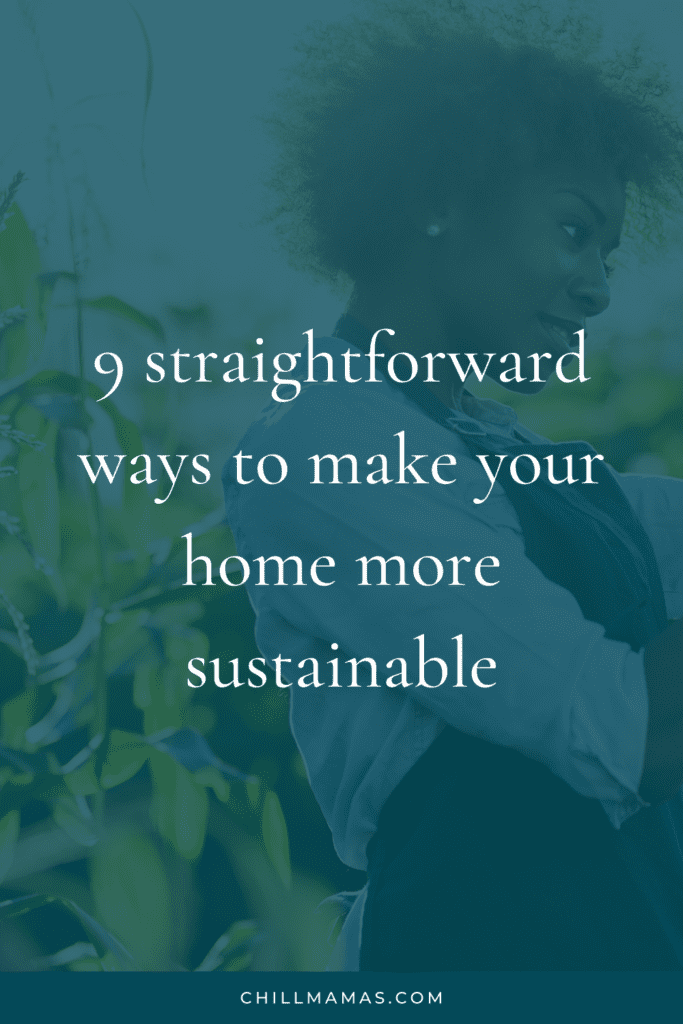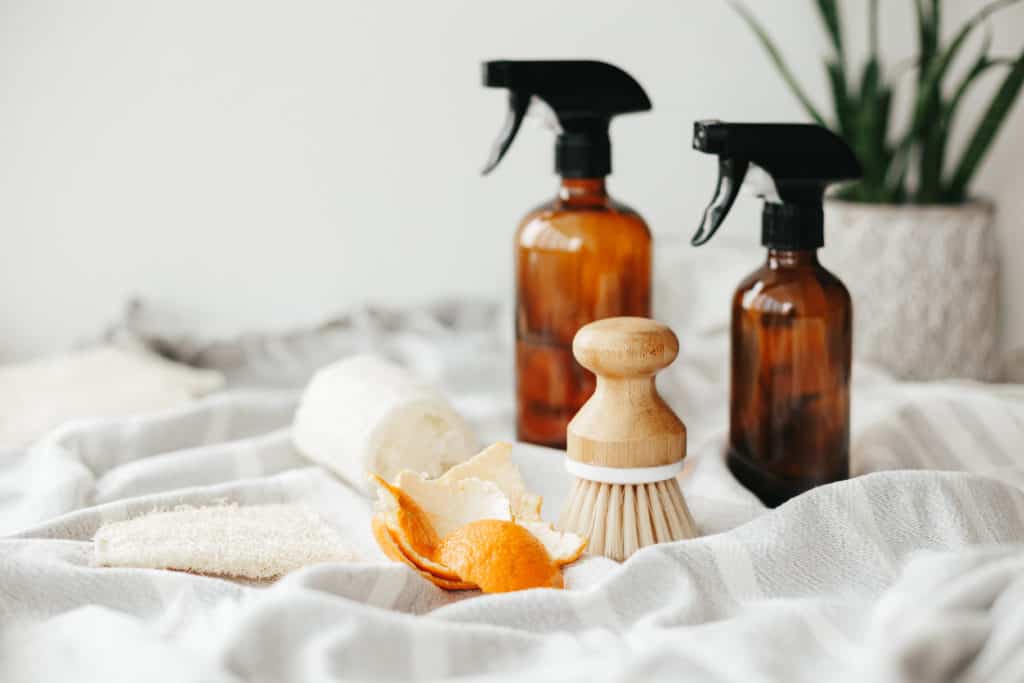If you’re anything like me, you’re kind of concerned when it comes to the environment and where we’re headed. You might be newer to the idea of living more sustainably and don’t know where to start.
That’s understandable! It’s a lot to think about.
You can make your home more sustainable without getting overwhelmed by making small changes here and there. It’s a lot more realistic than trying to overhaul your entire life to be eco-friendly in an instant!
It’s true that a majority of the responsibility when it comes to sustainability falls on governments and corporations to address. You can read more on how to participate in environmental activism here.
But in the meantime, making small changes to your household and adjusting how you spend some of your money, you can do your part. So let’s talk about a few things you can do to make your family and lifestyle a little more eco-friendly.
Affiliate Disclosure: Some of the links in this post are affiliate links. This means that if you click on the link and purchase an item, I will receive a commission at no extra cost to you. All opinions are my own and I only recommend stuff I actually try and love.
 Pin
PinGrow some of your own food
Here’s a sustainability tip that will help you save money in the long run.
Not everyone can grow most or all of their own food, but you might be able to grow more of it than you think. Whether you’ve got a few feet of outdoor space, some land, or no outdoor area at all, you can grow food.
Lettuce is a pretty easy vegetable to grow and it’s a food that’s expensive and unsustainable to ship around the country.
A truck full of lettuce or spinach is a lot less food than a truck full of potatoes or beans, for example.
Growing your own lettuce and other greens is a relatively inexpensive and simple way to cut down on your home’s carbon footprint.
You’ll also be able to enjoy much fresher greens by growing them yourself.
When was the last time you had to throw out half the container of spinach you got from the store because it was going bad within days of buying it?
Here are some links to get you started:
There’s also a ton of great, free information on growing greens and other foods on YouTube.
If you can, consider growing more than greens, but if you’re new to growing food, starting with one crop isn’t a bad idea.
Growing food for your family is such an effective way to reduce your home’s environmental impact and your monthly food bill
You’re eliminating any environmental damage from transporting food from farms to your home, you’re not partaking in as much plastic packaging, and you are likely to eliminate some food waste by growing food at home.
Avoid using products that cause aquatic toxicity
A large percentage of common household cleaning products and cosmetic products have ingredients that cause harm to the environment.
Check out your go-to cleaning products on EWG to see whether you’re using anything that causes acute aquatic toxicity or chronic aquatic toxicity.
After you use household cleaners, those harmful chemicals often end up leaching into the water, poisoning aquatic life and nearby vegetation, causing environmental harm.
This isn’t me being crunchy or “scared of chemicals” or anything. Water is literally a chemical! But unfortunately, a lot of our favorite cleaners and cosmetics are damaging to the environment.
Not only that, but many of them have quite a few ingredients that are linked to health issues like cancers, respiratory issues, digestive issues, and reproductive problems.
Go research your favorite products to figure out whether what you’re using is safe for your family and the environment. Then, try to find greener replacements for those cleaning products and cosmetics.
It sucks to change your routine, especially if you’ve found products that you really love. But there are so many effective and less-risky options available out there!
Avoid styrofoam
This one is pretty obvious, but avoiding styrofoam will help make your household a lot greener.
Styrofoam famously takes hundreds of years to break down. And even when it does, it’s still harmful to the planet, leaching chemicals linked to various health problems into the soil and water nearby.
So, styrofoam plates, bowls, and cups? Just don’t buy them if you can help it. Using it for packing materials for your business? See if you can find another solution made of paper or some kind of biodegradable material.
If you do need to use single-use plates and cups, use something that is more easily recycled and accepted by your local recycling plant.
Shop secondhand when possible
 Pin
PinThe fashion industry is notoriously horrible for the environment and often exploits the workers they employ. Many luxury retailers also have the same issues, so paying more for your clothes doesn’t always remove the environmental impact.
When you need to get new clothes, your best option is shopping secondhand. Secondhand shopping isn’t just for people who can’t afford new clothes, it’s for everyone who is budget or environmentally conscious.
A majority of items donated to thrift stores end up in landfills. Buying pre-loved clothes is a simple way to keep more of those clothes from ending up there.
Don’t forget that online thrift stores are a thing if you’re not into heading down to your local spot. ThredUp and Unclaimed Baggage are both great sites to score clothes at a decent price. (Grab $10 off your first purchase at ThredUp by using my link!)
Explore shopping from sustainable brands
Not everything can be bought secondhand (hello underwear, socks, etc.) so when you do need to pick up brand new clothing items, your best option is to find a clothing brand that is doing its best in terms of sustainability.
Here’s some things to look for when searching for sustainable clothing brands:
- What percentage of their clothing is made from recycled materials?
- Does the brand offset their carbon emissions? How so?
- Do they donate any percentage of revenue to environmental causes?
- Do they participate in any environmental activism?
- Do they have a program for recycling your old clothes with them or a way to shop secondhand items from their brand?
- Do they pay their employees a living wage?
And here are some of my favorite sustainable clothing brands to shop from:
A lot of these brands are pricier to buy from than the average clothing brand, so most of the stuff I buy is secondhand. But there are quite a few to choose from if you do have the funds.
Cut out as many single-use products as you can
 Pin
PinThis kinda goes without saying, but if you’re going to buy something new, consider the longevity of that item. It’s more sustainable to avoid buying single-use products for your household.
Buying in bulk when possible, purchasing re-usable items, and refilling containers you already own instead of buying brand new containers each time will all help your home be that much more eco-friendly.
Some great ways to accomplish this:
- Replace paper napkins with cloth ones
- Avoid buying paper towels, too, since using rags or microfiber clothes will do the trick just as well (and even better in some cases.)
- Try beeswax wraps instead of plastic wrap
- Check out silicone bags instead of plastic bags for food storage
The goal isn’t necessarily to go for zero waste living unless you want to. Zero waste isn’t realistic for most of us. But slowly reducing the amount of waste your family produces by replacing some single-use products with reusable items is an awesome way to make your lifestyle more eco-friendly.
Consider eating less meat and other animal products
I won’t ramble on about this for too long, but eating less meat is good for the environment and probably good for your health. Unless your doctor has advised you to eat lots of meat, you will likely benefit from reducing the amount that you eat.
Some meats are more harmful to the environment than others, but most of them produce high greenhouses gas emissions that are adding to climate change. And eating too much meat has been linked to a number of health issues.
Here’s a quick guide for meat-eaters to buy more mindfully in order to reduce their environmental impact and risk of health issues.
Participate in recycling programs
If you have local recycling programs, compare them and find one or multiple you’d be interested in participating in. Make sure to check out any guidelines they have (do you need to wash your recyclables? what materials do they accept?) before adding things to your recycling bin.
That way, you know what you’re sending off is actually being recycled!
Buy from brands that support planting trees or removing trash from oceans
When making purchases online or in-stores, do your best to research the brands that you’re buying from. If you can, it’s a good idea to buy from brands that are more eco-friendly.
Most sustainable brands will have some level of transparency about their environmental impact.
If they simply claim to be sustainable or green but don’t have any proof behind that statement, be wary of the brand because they may be greenwashing and not actually sustainable.
Look for a page on the brand’s website that details how the brand is sustainable. Are they part of 1% for the planet? Do they donate funds to ocean waste removal? Do they plant trees? What does their supply chain look like? Do they have any certifications from third parties?
You won’t always have time to do this kind of in-depth research about everything you buy, of course, but when you do have time, make an effort to research the brands you’re supporting.
Buy live plants instead of fake ones
Live plants beautify your home and clean your air naturally. They’re also pretty inexpensive!
If you don’t have a green thumb, no worries. There are so many low-maintenance, easy-to-care-for indoor plants that you can probably successfully grow in your home. Here’s a list of my favorite indoor plants that don’t require much work at all.
If you don’t have time, here are my top 3 picks for an easy indoor plant
You can get a self-watering plant pot to make your plant care even easier.
Wrapping up
If you’ve decided to make your home more sustainable and eco-friendly, there’s a lot more than you can do than the list about. But this list is a pretty good way to start and I’d HIGHLY recommend trying to make one or two little changes at a time instead of attempting the overwhelming task of greenify-ing your home all at once.
You’ll be a lot less likely to run out of steam that way and make changes that are actually sustainable in the long term.
Good luck with your sustainability journey and I hope you’re able to make your home more sustainable using a couple of tips in this article. Comment below with other eco-friendly changes you’ve taken on in your life and share the love!
 Pin
Pin
